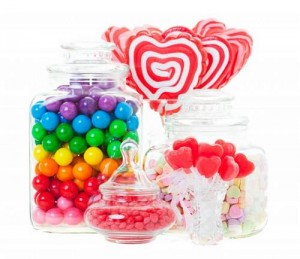Did You Know Thereís Coal Tar in Your Candy?

As humans we are drawn to bright colours and have found ways to make our food any colour of the rainbow. Children especially, delight in brightly coloured beverages, candy, popsicles, jello, fruit snacks, breakfast cereal, and other food products. Notice, I didnít say food! Artificial colours are also found in products from salad dressing, to nacho chips, to cheese and yogurt for a more pleasant appearance. We use them to make our icing colourful and our cookies pretty!
Many Artificial Food Colouringsí are derived from coal tar by combining aromatic hydrocarbons like toluene, xylene, and benzene, which are obtained by distillation of bituminous coal. These dyes are petroleum based products.
Artificial food colours were known by an FD&C numbers such as FD&C blue#1 (FD&C meaning approved for Food, Drugs and Cosmetics), and are more commonly known by a more international labelling method using the letter E, followed by an identifying number such as 102. Commonly ingredient lists will just say artificial colour or colour.
While artificial food colouring has been suspected as a source of hyperactivity in children, a study at Southampton University in the UK has linked the mixture of some artificial food colours in combination with sodium benzoate to hyperactivity in children. Both of these ingredients are commonly found together in soda and other products. Researchers from this study estimated that approximately 30% of all ADHD could be eliminated by removing the offending colouring from beverages and food products. Sodium Benzoate is a preservative that is too difficult to replace, so itís removal has not been considered.
Tartrazine, known as FD&C Yellow #5 and E102 appears to cause the most allergic reaction and intolerance reactions. It is noted that people with asthma and aspirin intolerance are most strongly affected and reaction symptoms may appear within minutes to 14 hours after ingestion. It is found in a host of food products including popular brands of macaroni and cheese, nacho chips, candy, etc.
Symptoms of reactions can include anxiety, blurred vision, itching,sleep disturbance, and hyperactivity among other things.
Children are not as well equipped as adults to rid their bodies of these chemical dyes, because they are small, more frequently exposed and they do not have mature detoxification systems. Eating real foods will limit your childís exposure to these chemicals which are prevalent in the foods marketed to children.
Strange that we give candy as a sign of affection, but when we know better, we can do better!
Do you avoid food colouring?
http://healthfreedoms.org/2014/02/23/did-you-know-theres-coal-tar-in-your-candy/
